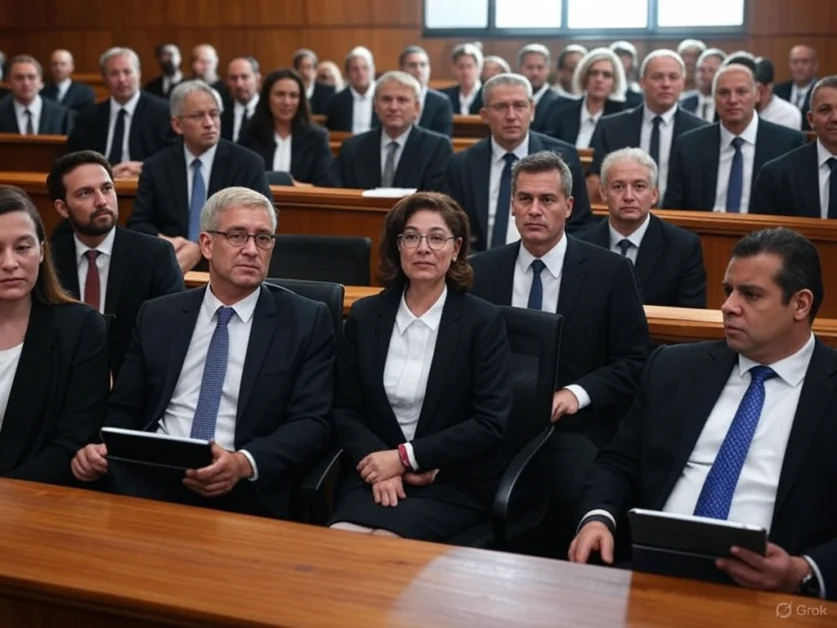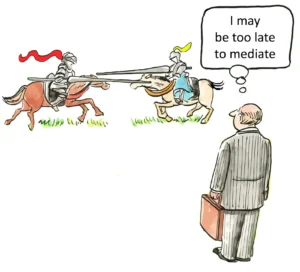What Judicial Trends Are Emerging from Supreme Court Cases?
The evolving landscape of judicial trends emerging from Supreme Court cases reveals significant shifts in legal doctrine that will shape American jurisprudence for generations to come. With the Court’s current 6-3 conservative majority firmly established, we are witnessing a transformation in how the nation’s highest tribunal approaches constitutional interpretation, administrative authority, and individual rights. These emerging patterns reflect not merely incremental adjustments to existing precedent, but rather fundamental reconsiderations of the Court’s role in our constitutional system and the proper methodology for resolving complex legal questions. Understanding these trends provides essential insight for legal practitioners navigating an increasingly dynamic judicial environment.
The Court’s recent terms have produced decisions that collectively signal a willingness to reconsider long-established doctrines when they appear inconsistent with the original understanding of constitutional text or when they have proven unworkable in practice. This approach to constitutional interpretation reflects a commitment to legal principles rather than policy preferences, ensuring that our constitutional system remains faithful to its foundational premises while adapting to contemporary challenges. The landmark precedents established in these rulings influence not only the specific areas of law they address but also the broader methodology employed by courts throughout the federal judiciary.
These shifts come at a time when public perception of the Court has reached near-historic lows, with fewer than half of Americans (47%) expressing a favorable opinion according to recent polling. This declining confidence presents a significant institutional challenge, particularly as the Court confronts highly contentious issues that divide the American public. The divergence in perception between Democrats (24% favorable) and Republicans (73% favorable) further underscores the increasingly polarized view of the Court’s jurisprudence and institutional role.
The Demise of Administrative Deference
One of the most consequential judicial trends emerging from the Supreme Court involves the reconsideration of longstanding doctrines of administrative deference. For nearly forty years, courts deferred to federal agencies’ reasonable interpretations of ambiguous statutes they administered under the Chevron doctrine. This framework fundamentally altered the relationship between the judiciary and the administrative state, granting significant interpretive authority to executive agencies rather than courts.
The Court’s rejection of this framework marks a significant restoration of judicial authority over statutory interpretation. This shift recognizes that determining the meaning of statutes is a quintessentially judicial function that cannot be abdicated to administrative agencies. The ruling acknowledges that Article III vests the judicial power exclusively in the courts, not in executive branch officials who may be influenced by political considerations rather than legal principles.
The practical implications of this trend are far-reaching. Federal agencies will no longer receive automatic deference when interpreting ambiguous statutory provisions, requiring them to provide more persuasive legal justifications for their regulatory actions. Courts will now exercise independent judgment when reviewing agency interpretations, potentially leading to more rigorous judicial scrutiny of administrative rulemaking. This shift restores the traditional separation of powers, ensuring that judges, not bureaucrats, have the final say on questions of statutory meaning.
Redefining Executive Authority
The Court’s evolving approach to presidential immunity represents another significant trend that will shape executive power jurisprudence for generations. Recent decisions have explicitly recognized that presidents enjoy absolute immunity from prosecution for official acts taken within their constitutional authority. This jurisprudence reinforces the unique constitutional position of the presidency and acknowledges the dangers of subjecting presidential decision-making to potential criminal liability.
An important distinction has emerged between official acts, which receive absolute immunity, and unofficial acts, which do not. This nuanced approach balances the need to protect the presidency as an institution with the principle that no person is above the law. By establishing this framework, the Court has provided crucial guidance for lower courts evaluating claims of presidential immunity in current and future cases, creating precedent that transcends any particular administration.
This trend reflects a profound understanding of the separation of powers and the unique constitutional role of the presidency. The threat of criminal prosecution for official acts could severely impair a president’s ability to make difficult decisions and faithfully execute the laws. This precedent ensures that presidents can fulfill their constitutional duties without fear of politically motivated prosecutions while preserving accountability for truly private conduct.
The Major Questions Doctrine and Legislative Primacy
Beyond overturning administrative deference doctrines, the Court has established several other precedents that collectively redefine the scope of administrative authority. These decisions reflect a broader reconsideration of the administrative state’s constitutional foundations and the proper limits of executive power in our system of separated powers.
The Court’s rulings significantly curtail the ability of federal agencies to make major policy decisions without clear congressional authorization. This “major questions doctrine” requires Congress to speak clearly when authorizing agencies to decide issues of vast economic or political significance. By strengthening this doctrine, the Court has established a precedent that prevents administrative agencies from claiming broad regulatory authority based on vague or ambiguous statutory provisions.
This trend reinforces democratic accountability by ensuring that major policy decisions are made by elected representatives in Congress rather than unelected bureaucrats. It also protects individual liberty by preventing agencies from expanding their authority beyond what Congress has explicitly authorized. The long-term impact of this ruling will likely be a more restrained administrative state that respects constitutional boundaries and legislative supremacy in policymaking.
Free Speech Jurisprudence in the Digital Age
The Court’s decisions addressing social media regulation establish crucial precedents for free speech in the digital era. In cases challenging state laws that sought to restrict content moderation by social media platforms, the Court recognized that these platforms possess First Amendment rights to select, edit, and remove content on their services. This precedent affirms that digital platforms, like traditional publishers, enjoy constitutional protection for their editorial discretion.
The Court has rejected attempts to treat digital platforms differently from other speech intermediaries, emphasizing that digital communication represents merely the newest form of speech in our society and that established principles regarding editors, publishers, and content selection apply. This precedent establishes that government cannot compel private platforms to carry specific content or viewpoints, even in the name of promoting viewpoint diversity or preventing alleged bias.
The Court’s approach demonstrates a commitment to applying established First Amendment principles to new technologies rather than creating special constitutional rules for digital media. This precedent will guide lower courts in evaluating future attempts to regulate online speech, ensuring that constitutional protections remain robust in the digital environment while allowing platforms to establish their own content policies.
Evolving Civil Rights Jurisprudence
Recent terms have included several decisions establishing important precedents in the realm of civil rights law. These rulings clarify the scope of federal civil rights statutes and the constitutional principles that underlie them, providing guidance for future litigation in this critical area.
In cases involving private rights of action under federal spending legislation, the Court has preserved crucial enforcement mechanisms for various civil rights laws. This jurisprudence emphasizes that the text of relevant statutes applies broadly, rejecting arguments that would have severely restricted private enforcement of federal rights. These decisions have significant implications for vulnerable populations, ensuring they retain important tools for vindicating their federally protected rights when state actors violate them.
At the same time, the Court has shown a willingness to reconsider aspects of civil rights jurisprudence that lack firm grounding in statutory text or constitutional principles. This balanced approach reflects a commitment to faithful interpretation of civil rights laws while ensuring that judicial innovations do not extend beyond what Congress has authorized or the Constitution requires.
Methodological Shifts in Constitutional Interpretation
Throughout its recent decisions, the Court has further developed and refined its approach to constitutional interpretation, establishing methodological precedents that will influence judicial decision-making across a wide range of issues. These precedents reflect a commitment to originalism and textualism while acknowledging the role of historical practice and precedent in constitutional adjudication.
The Court’s emphasis on historical analysis in constitutional cases demonstrates a continued commitment to understanding constitutional provisions according to their original public meaning. This approach grounds constitutional interpretation in objective historical evidence rather than evolving social values or policy preferences, providing a more stable and predictable foundation for constitutional law.
At the same time, the Court has shown a willingness to reconsider precedents that lack firm grounding in constitutional text, structure, or history. This methodological approach ensures that constitutional interpretation remains faithful to the document itself rather than judicial innovations that may have strayed from its original meaning. The precedential value of this interpretive methodology extends beyond any particular case, influencing how lower courts will approach constitutional questions in the future.
Federalism and State Authority
Several of the Court’s recent decisions establish important precedents regarding federalism and the proper balance of authority between federal and state governments. These rulings clarify the constitutional boundaries that limit federal power and preserve state sovereignty in our federal system.
The Court has reinforced the principle that federal agencies cannot exceed the authority delegated to them by Congress, particularly when their actions would intrude upon traditional areas of state regulation. This precedent protects state autonomy against federal administrative overreach, ensuring that significant policy decisions affecting the federal-state balance receive democratic consideration in Congress rather than bureaucratic determination.
These federalism precedents reflect the Court’s recognition that our constitutional structure divides power not only among the three branches of the federal government but also between the federal government and the states. By enforcing these structural limitations, the Court has established precedents that preserve the diverse policy approaches that federalism enables while ensuring that federal authority remains within its proper constitutional bounds.
Emerging Trends in Dictionary Usage
A fascinating methodological trend in the Court’s jurisprudence involves the increasing use of dictionaries in judicial opinions. This practice reflects a broader commitment to textualism and originalism, as dictionaries provide evidence of how words were commonly understood at the time relevant legal texts were enacted. The rate at which justices cite dictionaries has increased dramatically over recent decades, with usage now seven times higher than in 1950.
This trend appears to coincide with concerns about judicial activism and a desire to ground legal interpretation in objective sources rather than subjective policy preferences. Dictionary usage provides a veneer of objectivity that justices may feel is necessary to quell institutionally damaging charges of legislating from the bench. This pattern is particularly pronounced at the Supreme Court level, where public scrutiny is most intense.
The rise in dictionary usage also correlates with the increasing influence of textualist and originalist methodologies, which emphasize the ordinary meaning of legal texts as understood at the time of their adoption. This approach to interpretation seeks to constrain judicial discretion by focusing on objective linguistic evidence rather than legislative history or evolving social norms.
Criminal Procedure and Due Process
The Court has also established important precedents in the realm of criminal procedure, clarifying constitutional protections for defendants and the proper scope of prosecutorial authority. These decisions will guide lower courts in ensuring that criminal proceedings comport with due process while allowing legitimate law enforcement interests to be pursued.
Recent rulings on the interpretation of federal criminal statutes have reinforced the principle that criminal laws must be construed narrowly, with ambiguities resolved in favor of the defendant. This precedent protects individual liberty by ensuring that prosecutors cannot stretch criminal statutes beyond their fair meaning. By establishing clear guidelines for the interpretation and application of criminal statutes, the Court has created precedents that will promote both justice and predictability in criminal cases.
These criminal procedure precedents reflect the Court’s commitment to constitutional protections in the criminal justice system while recognizing the government’s legitimate interest in prosecuting actual violations of the law. The Court has shown particular concern for ensuring that criminal statutes provide fair notice of what conduct is prohibited and that prosecutorial discretion remains within proper bounds.
Religious Liberty Jurisprudence
The Court has continued to develop important precedents regarding religious liberty and the proper interpretation of the First Amendment’s religion clauses. These decisions clarify the constitutional protections for religious exercise and the limitations on government authority to burden religious practice.
The Court’s religious liberty jurisprudence has increasingly emphasized that the Free Exercise Clause requires religious adherents and organizations to receive equal treatment from the government, not special disabilities based on their religious character. This precedent ensures that religious individuals and entities can participate in public programs and civic life on equal terms with their secular counterparts.
These religious liberty precedents reflect the Court’s understanding that religious freedom represents a fundamental constitutional value that deserves robust protection. By establishing clear standards for evaluating government actions that burden religious exercise, the Court has created precedents that will guide lower courts in preserving this essential liberty while respecting other important governmental interests.
Second Amendment Jurisprudence
The Court’s recent decisions addressing gun rights build upon landmark precedents established in previous cases, further clarifying the scope of the Second Amendment right to keep and bear arms. These rulings establish important standards for evaluating firearms regulations at various levels of government.
The Court has reinforced that the Second Amendment protects an individual right to possess firearms for lawful purposes, not merely a collective right connected to militia service. This precedent ensures that courts will scrutinize gun regulations to ensure they comport with the constitutional text and history rather than deferring uncritically to legislative judgments.
These Second Amendment precedents reflect the Court’s commitment to taking all constitutional rights seriously, including those that may be politically controversial. By establishing clear standards for evaluating firearms regulations, the Court has created precedents that will guide lower courts in distinguishing between permissible public safety measures and unconstitutional infringements on Second Amendment rights.
Election Law and Democratic Processes
The Court’s decisions addressing election law establish important precedents regarding the constitutional framework governing democratic processes. These rulings clarify the proper roles of state legislatures, state courts, and federal courts in establishing and interpreting election rules.
The Court has emphasized that the Constitution assigns primary responsibility for regulating elections to state legislatures, subject to congressional oversight within the limits of federal authority. This precedent reinforces the decentralized nature of our electoral system while ensuring that state election procedures remain subject to constitutional constraints.
These election law precedents reflect the Court’s careful consideration of both democratic principles and constitutional text. By establishing clear standards for resolving election disputes, the Court has created precedents that will guide lower courts in ensuring that elections remain both free and fair.
Birthright Citizenship and Immigration
A significant case currently before the Court involves President Trump’s executive order challenging birthright citizenship. This case tests the longstanding interpretation of the 14th Amendment’s Citizenship Clause, which has been understood for over a century to guarantee citizenship to virtually everyone born on American soil, regardless of their parents’ status.
The Court has scheduled oral arguments for May 15, 2025, with a decision expected by late June or early July. This case represents a direct challenge to the 1898 precedent established in Wong Kim Ark, which held that the 14th Amendment “affirms the ancient and fundamental rule of citizenship by birth within the territory, in the allegiance and under the protection of the country, including all children born here of resident aliens.”
This case also raises important questions about the scope of executive authority in immigration matters and the proper role of the judiciary in enforcing constitutional guarantees. The Court’s decision will have profound implications for constitutional interpretation, separation of powers, and the rights of immigrants and their children in the United States.
Transgender Rights and Healthcare Access
Another significant case currently before the Court involves state bans on gender-affirming care for transgender minors. This case represents the Court’s first opportunity to address the constitutional rights of transgender individuals directly, with potentially far-reaching implications for other disputes involving transgender rights.
The Court’s decision will address whether absolute bans on gender-affirming healthcare for minors are constitutional, a question with national significance given the possibility of federal restrictions on such care. Beyond its immediate impact on transgender healthcare access, this case may establish broader principles regarding constitutional equality law that could affect many other areas of jurisprudence.
This case illustrates the Court’s increasingly central role in resolving highly contested social and political questions. The outcome will likely influence not only the specific rights of transgender individuals but also the broader framework for analyzing equal protection claims under the Constitution.
The Court’s Institutional Role and Public Perception
The judicial trends emerging from the Supreme Court reflect a particular understanding of the judiciary’s proper role in our constitutional system. By establishing precedents that enforce structural constitutional principles and textual limitations on government power, the Court has demonstrated a commitment to legal principle over policy preference.
Critics have characterized some of these decisions as a “power grab” by the judiciary, particularly the overturning of administrative deference doctrines. However, this criticism misunderstands the nature of judicial power. The Court has not claimed new authority for itself but rather reclaimed the traditional judicial function of independently interpreting the law, a responsibility that had been partially abdicated under previous regimes.
The precedents established in these cases reflect a vision of the judiciary as a check on the other branches, ensuring that they act within their constitutional boundaries rather than deferring to their policy judgments. This approach strengthens the rule of law by ensuring that government action comports with legal constraints, not merely political preferences.
The Future of Supreme Court Jurisprudence
As we look to the future, several factors suggest that the judicial trends identified above will continue to shape Supreme Court jurisprudence in the coming years. The Court’s current 6-3 conservative majority appears stable, providing institutional continuity that will allow these jurisprudential approaches to develop further and influence an even broader range of legal questions.
The Court’s docket for the 2024-2025 term already includes cases addressing issues from transgender healthcare to ghost gun regulation to environmental protection. These cases will provide opportunities for the Court to apply and refine the interpretive methodologies and substantive doctrines it has developed in recent terms.
Beyond the cases already scheduled for argument, the Court may also need to address election-related litigation following the 2024 presidential election. As one legal expert noted, “There’s no question about that, and that’s going to be high profile.” Such cases would further test the Court’s approach to constitutional interpretation and its institutional role in our democratic system.
The landmark precedents established in the Court’s recent decisions will reshape American law for decades to come. By clarifying constitutional principles, statutory interpretation methodologies, and the proper roles of various governmental actors, these precedents provide guidance that will influence countless future cases across diverse areas of law.
The Court’s willingness to reconsider established doctrines when they lack firm legal foundation demonstrates a commitment to constitutional principle over mere stability. While stare decisis remains an important consideration, the Court has recognized that it must ultimately be guided by the law itself rather than its own prior mistakes. This approach ensures that our legal system remains faithful to its foundational texts and principles.
As these precedents are applied and developed in future cases, their full implications will become increasingly clear. What remains certain is that the Court’s recent terms have produced decisions of profound significance that will influence American law and governance for generations. These landmark precedents reflect the Court’s essential role in our constitutional system: saying what the law is, not what it should be, and ensuring that all government action comports with legal constraints.
The judicial trends emerging from Supreme Court cases thus represent not merely technical adjustments to specific legal doctrines, but rather a fundamental recalibration of our constitutional order. By restoring traditional understandings of separation of powers, federalism, and individual rights, the Court is establishing a jurisprudential framework that will shape American law long after the current justices have left the bench. For legal practitioners, scholars, and citizens alike, understanding these trends is essential for navigating our evolving constitutional landscape.
Citations:
- Supreme Court Birthright Citizenship Debate
- Tracking Supreme Court Trends for New Term
- Justia Supreme Court Case Database
- Rutgers Legal Issues to Watch 2025
- Impact of Supreme Court Conservative Majority
- Public Views on Supreme Court Near Low
- Supreme Court Dictionary Use Analysis
- Justices Hear Trump Birthright Citizenship Case
- 2024-2025 Supreme Court Term Preview
- Guide to 2024-2025 Supreme Court Term
- Major Supreme Court Rulings Expected 2025
- February 2025 Supreme Court Updates
- Official Supreme Court Website
- Oyez Supreme Court Case Database
- SCOTUS Blog on Supreme Court Updates
- State Court Cases to Watch 2025
- SCOTUS Cases Threatening Rule of Law
- Empirical SCOTUS Analysis Platform
- NBC News on Supreme Court Politics
- Ballotpedia Supreme Court Cases 2024-2025
- PMC Study on Judicial Trends
- Supreme Court Slip Opinions Archive
- 2024 Supreme Court Opinion PDF
- Supreme Court Conservative Shift Impact
- Washington Post on Supreme Court Decisions
- Social Studies on Supreme Court Trends
- Project 2025 Impact on Courts
- Five Legal Trends to Watch 2025
- Harvard Political Review on SCOTUS 2025
- Third Way on Supreme Court 2025
- Supreme Court Environment Cases 2025
- Supreme Peoples Court Keywords 2023 Impact
- Top SEO Trends for Lawyers
- NCSC Trends in State Courts 2024
- SEO Strategies for Legal Sector Suppliers
- Empirical SCOTUS on Best Opinions
- BYU Law Review on Keyword Advertising
- Ultimate Guide to SEO for Lawyers
- ScienceDirect Study on Judicial Trends
- Unmasking SEO for Lawyers Guide
- Free Law on Semantic Search Trends
- ABA on Keyword Advertising and Trademarks
- UPenn Language Log on Legal Semantics
- Legal Ink on Keyword Advertising Rulings
- MDPI Article on Judicial Data Analysis
- AP News Hub on U.S. Supreme Court
- SCOTUS Blog Emergency Docket 2024-2025
- ACLU Supreme Court Case Listings
- Harvard Law Review Supreme Court Statistics
- Ninth Circuit on Competitive Keyword Ads
- Equinox Journal on Supreme Court Studies
- Traffic Think Tank on Low Competition Keywords
- Second Circuit on Keyword Advertising Lawsuits
- Exploding Topics on Low Competition Keywords




















